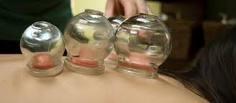Traditional Chinese Medicine

Introduction
The theory of Traditional Chinese Medicine is the one which has made an independent development of modern medicine and science. Therefore it may be seen bizarre by those who get used to modern medicine. You many be confused by the mysterious oriental way of thinking, when you started to know Chinese medicine. Understanding TCM is indispensable for using medicinal herbs effectively.
The reliable effectiveness of traditional Chinese medicine offers the best explanation for its history of thousands of years. Nowadays, TCM has been recognized as a complementary and alternative therapy in the world. TCM exhibits vigorous vitality with its clinic effect, rich content, thousands of years of clinical experience, tens and thousands of volumes of literatures and prescriptions that have benefited so many people.
Philosophical Background

Philosophical background of TCM is mainly based on the Yin-Yang and Five Elements theories, which were later absorbed by Taoism. These theories apply the phenomena and laws of nature to the study of the physiological activities and pathological changes of the human body and its interrelationships. Traditional Chinese medicine holds that human life is a physiological process in constant motion and change. Under normal conditions, the waxing and waning of yin and yang are kept within certain bounds, reflecting a dynamic equilibrium of the physiological processes. When the balance is broken, disease occurs. Typical cases of disease-related imbalance include excess of yin or yang, deficiency of yin or yang. Similar to the theory of yin-yang, the theory of five elements (wood, fire, earth, metal and water) was an ancient philosophical concept used to explain the composition and phenomena of the physical universe.
How does Traditional Chinese Medicine think of human beings and their diseases?
The Close Relationship between Humans and Environment
Traditional Chinese Medicine gives great importance to the close relationship between humans and environment. This is the idea that all the phenomena of humans in the course of their lives---birth, growth, onset of ailments and even death---are under the influence of natural environment. For example, in rainy season we are more likely to suffer from edema or gastrointestinal disorder because of dampness, which tells us the fact that humans are closely related to environment.
The Holistic Approach

Traditional Chinese Medicine takes the human body for one organism as a whole: every tissue or every organ does not exist independently, but is closely related to each other. Therefore mind and body are naturally considered to be inseparable.
With a history of more than 2000 years, TCM has gradually formed a unique system to diagnose and cure illness. The TCM approach is fundamentally different from that of Western medicine. In TCM, the understanding of the human body is based on the holistic understanding of the universe as described in Taoism, and the treatment of illness is based primarily on the diagnosis and differentiation of syndromes. The fundamental theory of TCM is dense and abstract, with elements from nature and humanity incorporated in the process of its formation and development.
Disease

Under the normal state, a harmonious balance among all elements of the human body, such as qi, blood, fluid, the organs, the tissues and the channels, is maintained. The disruption of such balance results in many diseases.
It should be pointed out that actually there exist no "disease" as a clinical entity in the medical system of Traditional Chinese Medicine. In fact, our main concentration is not on the diagnosis, but on the analysis of symptoms and signs as well as the identification of a variety of patterns made by the elements of our bodies. Traditional Chinese Medicine includes the name of diseases, because there has been a necessity of combining this medicine with the western medicine. In addition, this means that the borderline of "disease", in other words, distinction between "normal"and "disease" is not quitly clear in Chinese medicine. The state of the human body seems to be something like a pendulum swinging slowly. The judgement whether the present state of your body is healthy or not depends upon its amplitude.

Evaluation of a syndrome not only includes the cause, mechanism, location, and nature of the disease, but also the confrontation between the pathogenic factor and body resistance. Treatment is not based only on the symptoms, but differentiation of syndromes. Therefore, those with an identical disease may be treated in different ways, and on the other hand, different diseases may result in the same syndrome and are treated in similar ways.
Typical TCM Therapy
The typical TCM therapies include herbal medicine, acupuncture, cupping, Tui na, Gua Sha, food therapy, qigong, etc. With acupuncture, treatment is accomplished by stimulating certain areas of the external body. Herbal medicine acts on zang-fu organs internally, while qigong tries to restore the orderly information flow inside the network through the regulation of Qi. These therapies appear very different in approach yet they all share the same underlying sets of assumptions and insights in the nature of the human body and its place in the universe.
The TCM approach treats zang--fu organs as the core of the human body. Tissues and organs are connected through a network of channels and blood vessels inside human body. Qi acts as some kind of carrier of information that is expressed externally through meridians system. Pathologically, a dysfunction of the zang-fu organs may be reflected on the body surface through the network, and meanwhile, diseases of body surface tissues may also affect their related zang or fu organs. Affected zang or fu organs may also influence each other through internal connections. Traditional Chinese Medicine treatment starts with the analysis of the entire system, then focuses on the correction of pathological changes through readjusting the functions of the zang-fu organs.